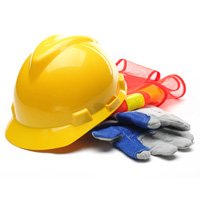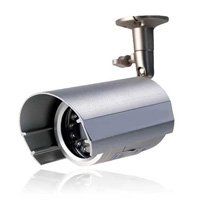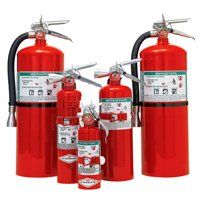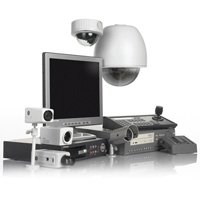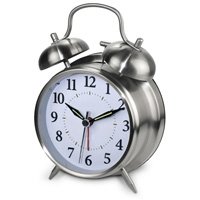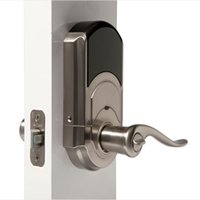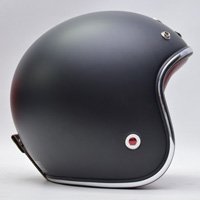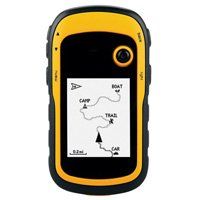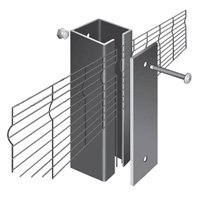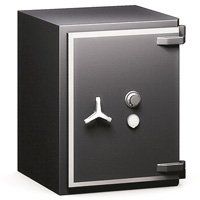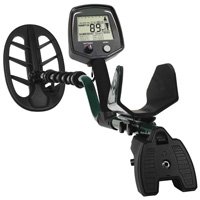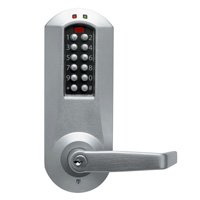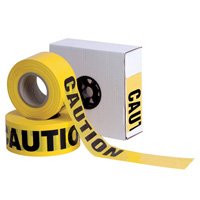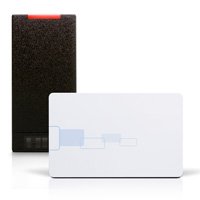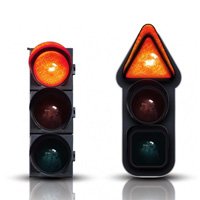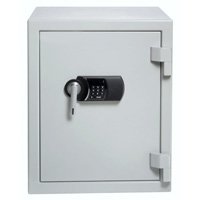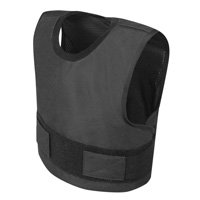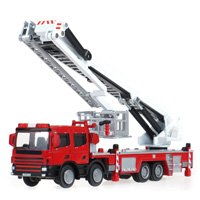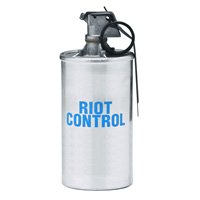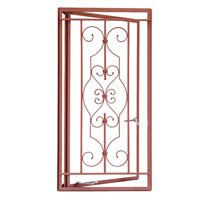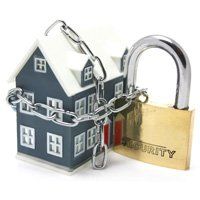Security & Protection
Recently Added Products
Security and Protection System - Introduction
Introduction
Physical security, or defenses that can be seen and touched, has seen some of the most significant technological advancements during the previous few decades. There are two primary aspects of physical security: the structure of the building itself, and the tools and technology used inside.
There have been several developments in the technology of security devices. Personal identity and access control systems that immediately "read" distinctive traits, such as voice quality and hand shape, are another example of such innovations.
Types of Security Systems
1. Security Guard
Hiring a security guard to keep your home safe is a tried and true method. However, it is a very efficient one. Having a security guard is a sensible choice if you own a sizable property or live in a high-density housing community.
If you hire a guard, he or she can walk the perimeter of your property. They can interrogate any stranger that knocks on your door.
2. CCTV Cameras
The face of an intruder can be recorded with relative ease by using a closed-circuit television camera. Authorities in the area will be able to use this information to track down the perpetrator.
The same goes for anyone who has been keeping a close eye on your house. Someone who sounds like that might be trying to break in.
The unique feature of CCTV cameras is that they can be accessed remotely, allowing you to keep an eye on your home even when you're not there.
3. Intruder alarm
If you are concerned about a break-in at your home, installing an intruder alarm is essential. These alarms feature motion detectors, door/window sensors, and more.
The alarm is activated by pressing a central keypad, which can be safeguarded with a PIN or other code.
The detectors, once set off, will sound an alarm at the first sign of motion or tampering. At the same time, the local authorities are notified.
4. Smoke Alarm
One frequent type of alert is the smoke alarm. Both business and residential buildings can benefit from its utilization.
The alarm system is made up of many smoke detectors placed strategically around the home. These alarms go off if the sensors detect any kind of heat or smoke.
The one with an in-house sprinkler system is another option for those concerned about fire.
5. Monitored Alarm
An unmonitored alarm is similar to a fire alarm in many ways, yet it has significant differences. When the alarm goes off, a designated staff member will contact you to find out if it was an accident or if there is indeed a security breach.
When an actual security breach is discovered, the appropriate authorities are notified without delay.
Different types of personal protection?
1. Hand Protection
Workers need gloves and other hand Security & Protection to avoid injuries like lacerations, punctures, cuts, abrasions, heat burns, chemical burns, and more.
Working in extreme temperatures, manually handling sharp objects, or interacting with hazardous substances are all examples of situations when protective gloves may be useful.
Materials including leather, canvas, metal, coated cloth, and chemical-resistant gloves are all viable options for hand protection gear.
2. Respiratory Protection
When employees are at risk of being exposed to high concentrations of potentially hazardous dusts, gases, fogs, fumes, mists, powders, or vapors they should wear respiratory protection. In order to keep your staff healthy, you must take measures to keep the air clean.
Masks, respirators, detectors, helmets, protective hoods, and more may fall under this category.
3. Face and Eye Protection
When employees are at danger of having their eyes or faces damaged by substances like light radiation, chemicals, molten metal, acids chemical fumes or flying particles, they must wear protective eye and face gear.
Visors, over glasses, face shields, eyewear add-ons, safety glasses, and goggles are all examples of personal protective equipment for the eyes and face.
Welding, working with lasers, heavy cutting, using gas under pressure, and handling dangerous substances are all examples of common operations that call for the usage of eye and face protection.
4. Hearing Protection
When working in a noisy setting when reducing either the volume or length of exposure is not an option, it is essential to wear hearing protection.
Earplugs, sound level indicators, acoustic foam, and comms sets are all forms of hearing protection. Because safety gear is supposed to keep its wearer safe, clean, and comfortable, plain cotton is never a suitable material.
5. Head Protection
Every worker in an area where there is a risk of a blow to the head, an electrical shock or burn, or a head injury from a falling or flying object must wear protective headwear.
Head protection personal protective equipment includes a wide variety of hats and caps. These helmets are made to take the impact of a hit and protect the wearer's head from projectiles.
Difference Between Protection and Security?
Protection
Access to system resources is the focus of protection. It controls which files a certain user can open or modify. System security must validate process and user satisfaction. As a result, these authorized clients and procedures will take good care of the CPU, RAM, and backup power. The safeguarding process must also include a means of determining which restrictions are required and how they will be implemented.
A good illustration of the importance of security may be found in the fact that any given business will have numerous sub-departments staffed by a large number of people. Common information will be shared between the many departments, while confidential information will be kept separate.
-
In the course of a period of protection, internal dangers may arise.
-
Contrarily, in protection only elementary questions are dealt with.
-
In contrast, security measures decide which files a certain user is allowed to see or modify.
-
Authorization mechanisms are used for security.
Security
Their system resources (saved data, memory, disks, etc.) are protected against malicious modification, unauthorized access, and discrepancy or inconsistency by the security systems in place. The security features (authentication and encryption) allow for a thorough examination of the user before granting access to the system.
For instance, at a company, the information may be obtained by a variety of employees, but it is inaccessible to anyone who is not affiliated with that company or who is engaged in a different line of business.
-
For security to work, it must be able to withstand assaults from without.
-
Complex queries are processed in security.
-
Security indicates the level of access a user has been authorized.
-
Tools like encryption and certification (authentication) are utilized in the security sector.
Advantages of having a Security System?
1. Notifies you of fire or gas issues
Notifications can be set up to be sent to your phone if your smoke or CO detector goes off while you're away from home. You may even be able to have the appropriate authorities contacted at once, depending on your service provider.
2. Lowers homeownera s insurance
A home security system may come with a monthly subscription, but it can save you up to 20% on your homeowner's insurance. When you factor in the convenience of having immediate access to police and emergency personnel, the cost of installing an alarm system actually looks very reasonable.
3. Allows remote access
These days, you can check in on your house from miles away using your smartphone and a modern security system. Depending on your service provider, you can manage everything from the temperature in every room to the lighting to the locks on every door and every light bulb.
4. Deters Crime
According to research conducted by Rutgers in 2009, residential robberies reduce in areas with a higher concentration of home security systems, regardless of whether or not individual residents themselves have such a system installed. An alarm system will not only keep you secure, but it will also discourage criminal activity and make the area around your home safer for everyone.
5. Protects Valuables
That is the most obvious advantage. Every one of us probably knows someone who has had expensive possessions stolen from their house, such as a television, computer, jewelry, or other valuables. When a precious artifact is lost, the tragedy is multiplied. An alarm from a home security system can deter many would-be intruders and alert the authorities if a break-in does occur, while a home safe can assist preserve priceless things.
Conclusion
Depending on the service provider and the specific system you choose, you may or may not be able to receive text messages or email alerts in the event of a security breach with these types of systems. If you have a monitored home security system, the monitoring service is notified immediately if there is an issue with your house's security. The monitoring service is notified in addition to the extremely loud alarm.
FAQs: Security & Protection
Q. Why is security and protection important?
Ans. When employees feel safe and secure in the workplace, businesses can save money on insurance, compensation, liability, and other costs to their stakeholders, which in turn increases profits and decreases expenses.
Q. What Are the Different Types of Home Security Systems?
Ans. Smoke Alarm, Intruder Alarm, Monitored Alarm, CCTV Camera, and Security Guard are common type of Home security systems
Q. What is basic difference between security and protection?
Ans. Protection accesses to system resources are what protection is concerned with. While, to ensure that only authorized users may access the system, we employ security measures.
Q. What PPE equipment is and what it is used for?
Ans. Personal protective equipment (PPE) includes things like goggles, gowns, masks, and, gloves that create physical barriers to keep germs from reaching your skin, eyes, nose, and mouth.
